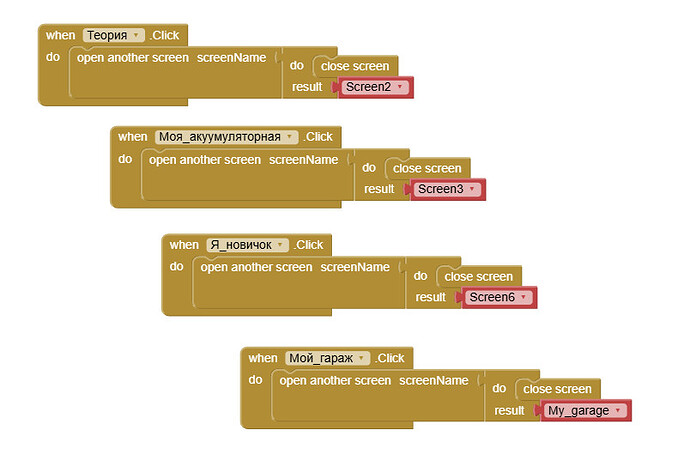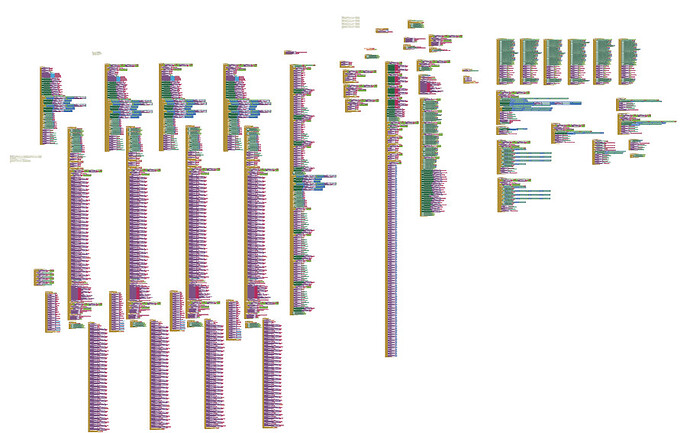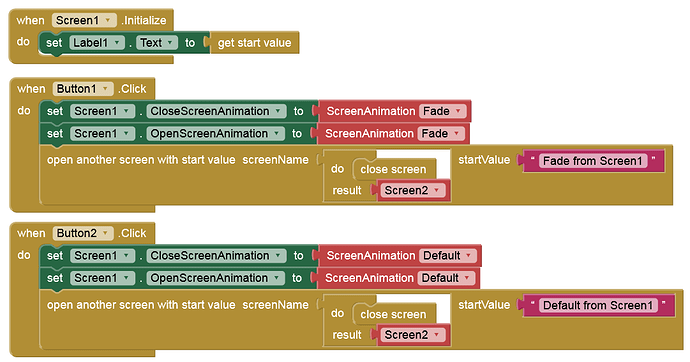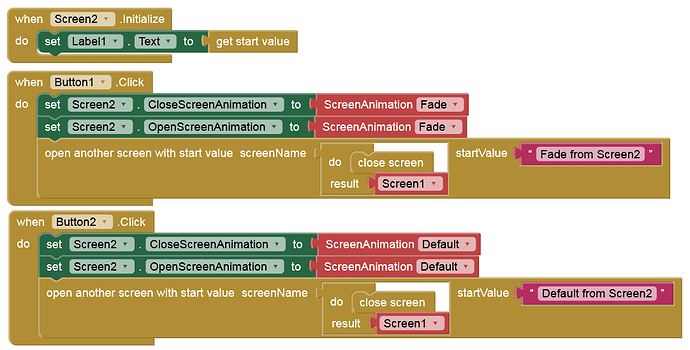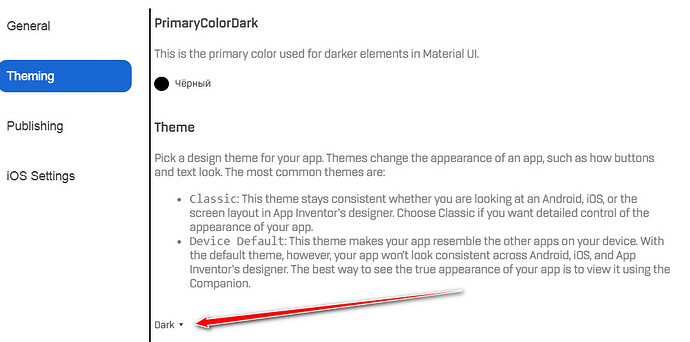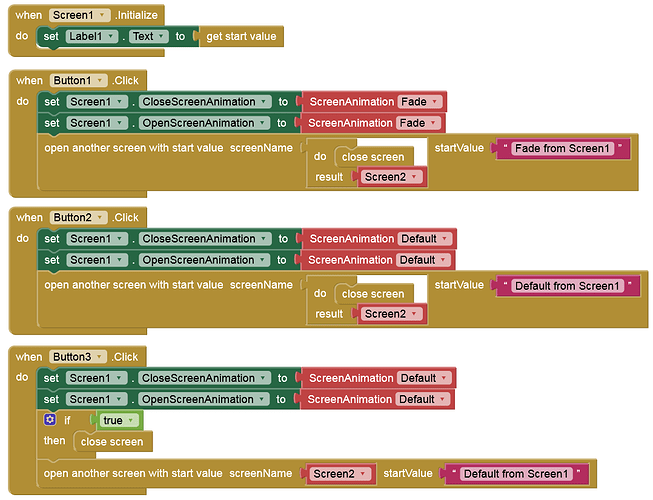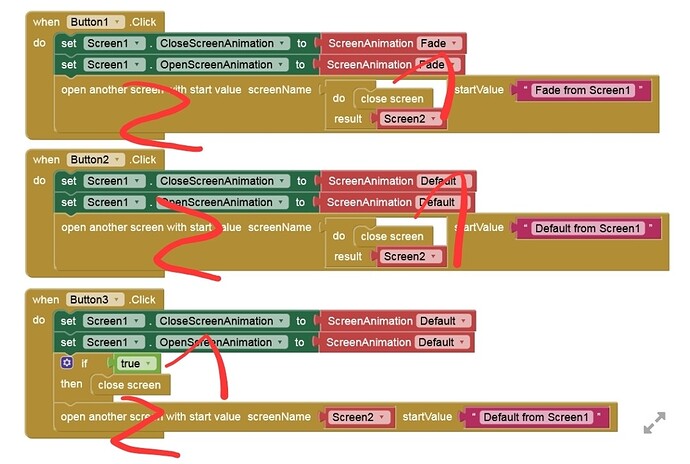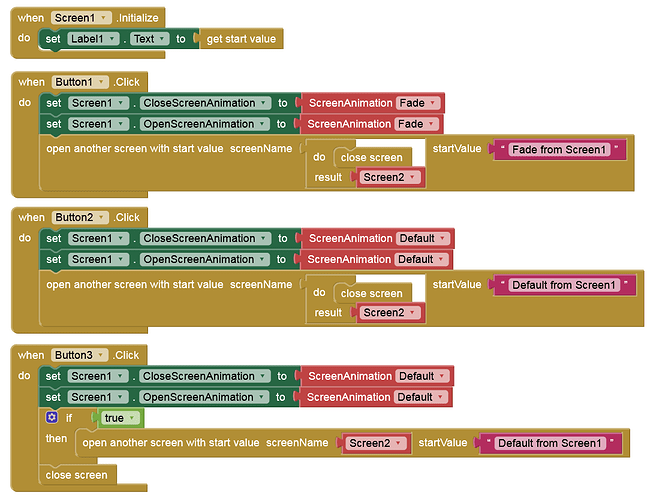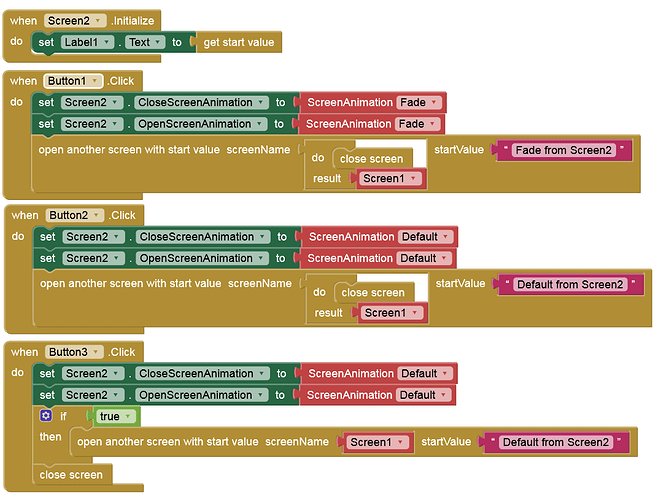Please tell me what can replace the white background when switching from one application screen to another.
I use these blocks:
Try the recommended manager screen method
or Tribblehunter's method (first open the new screen, then close the old)
Taifun
How can I try Tribblehunter's method in my application? Only by paying? I don't have PayPal. Are there other payment methods?
Dear @Korneich, if you pay attention to the first row in @Taifun's linked web page, you'll see that the use of true multiple screens has to be carefully evaluated. Many cons are affecting the use of true screens like lost variables, lost communications , etc.
The easiest way to avoid such troubles is to use virtual screens (by searching the forum with this tag you'll find lots of posts on the matter).
As an example of such approach you can find annexed a sample .aia that I've prepared time ago, in which I use also an extension by @shreyash that allows a smooth fading when switching between virtual screens.
Best wishes
SmoothFade.aia (1.4 MB)
Thank you for the tip, I studied this information earlier - before creating my application. But all my 6 screens are quite saturated and contain, among other things, hidden elements.
Try this: ScreenTransitionFade.aia (4.2 KB)
Build the APK and try it out. You'll notice the difference between "Fade" and "Default" (or the others).
When you have too many blocks spread out over too large a surface area,
the Blocks Editor hits a complexity limit when it tries to generate a blocks.png file for the screen.
There are two main approaches to deal with this:
- Start a Google Doc with a Table of Contents explaining your app, with sections for Design, Data, Code, including Downloaded Png images of all Events, Procedures, Globals, and with html cross-links for easy navigation. Such a doc becomes easier to read than a complete blocks image, because you have FIND, Next, PREV, back functionality, and you can add paragraphs of commentary around your code. This is my preferred life saver when doing a very large complex app. If you go this route, try to arrange your blocks geographically in a column matching the order of your Table of Contents, then do periodic Clean Up Blocks to pull them inline. This sometimes lowers the load on the Blocks Editor.
- Reduce your block count:
- Use parametrized procedures for common code
- Use Media text files instead of big clumps of text blocks
- Use generic blocks instead of repeating component event blocks
- Encode repeating decision patterns into lookup tables loaded from Media csv text files (does your blocks image look like a box of combs?)
- You don't need a component for every data instance. Reuse those components.
- If you can't fit data into a ListView or List Picker, show a small subset of the data in an Arrangement and slide it across the larger list of data.
Unfortunately, it didn't help. At least replacing the white background with a black one would be better...
I'm afraid that I haven't reached that level of developer yet
We cannot read your blocks image, but it looks like you have a lot of repetition or lots of long lists of the same things. Follow @ABG 's advice.
Maybe there is a solution for closing all other screens except the current one?
Just copy the blocks or adjust your blocks accordingly
The important thing to not get the white background is
You are doing it the other way around currently
Taifun
Hmm, where is the difference to my test app (blocks), apart from .Close/OpenScreenAnimation?
"first open the new screen, then close the old" - Taifun
First close, then open
vs
First open, then close
Taifun
I tested it often enough with both versions years ago. There's absolutely no difference between the two versions, at least not on my test devices (Pixel 2XL - Android 11, Pixel 4XL - Android 13, Pixel 7 Pro - Android 16). Tested with the APK.
ScreenTransitionFade_2.aia (4.8 KB)
Your screenshot shows for all 3 buttons the sequence First close, then open
First open, then close means
Taifun
Probably it is only possible to see if the screens are a bit heavier and use more blocks (this is a guess), or it is the darker user interface, or it is decice dependent, or (add your own guess)
But if we take a closer look at what happens, you might realize a tiny difference
-
first close, then open
This means for a few milliseconds no screen is open at all, i.e. a few milliseconds of void -
first open, then close
A few milliseconds 2 screens are open at the same time
Taifun
